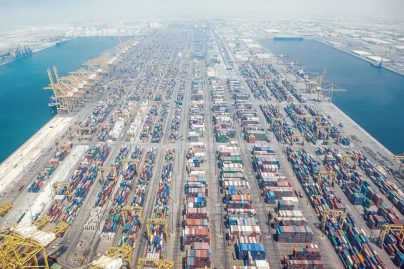THE ECOMMERCE CATCH 22
Sat 12 Feb 2022
Consumers have now well and truly begun to embrace the selection and convenience of e-commerce.
Since the onset of the pandemic, the consumer’s intent to purchase goods through e-commerce channels has increased significantly across categories – from everyday essentials to clothing, beauty products, and accessories, and to electronics, and new appliances. These shifts in consumer behavior are likely to stick over the long term as individuals become more accustomed to purchasing online.
More than half of consumers are expected to continue their online shopping habits even after we see the end of this pandemic. This pattern is likely to further fuel the growth of online sales. Forecasts made by top consultancy firms suggest that online sales could account for nearly half of all retail revenues within the next four to five years.
Having informal chats with several key executives of organizations and retailers, the general feedback being received is that those that have initially viewed e-commerce as a lifeline now take a slightly more cautious view.
While current online operations may look promising for quite a few, many have realized that skyrocketing online sales have also been accompanied by costs that have risen just as fast. Fulfillment costs can now be as high as 10 to 18 percent of e-commerce revenues, depending upon the category and industry segment. Digital marketing and customer acquisition costs, which could be in the region of 6-8 percent, sit on top of these. And frequent investments in updates to software, anti-hacking, more user-friendly, and AI-based websites will be recurring costs that will progressively squeeze margins and may end up making profitability a distant mirage.
Retailers are already, or if not, will soon recognize that all growth is not the same, and that unprofitable growth could end up destroying value, while they would need also to ensure that the brick-and-mortar model is still sustainable and profitable.
Retailers that give too much emphasis to investing in building up their e-commerce models and revenues could end up causing more harm to their organizations. The thumb rule needs to be – digital growth is not enough; only profitable digital growth will create value. Since e-commerce is a significant contributor to growth for most retailers, they must ensure that their strategy creates long-term value for the organization as a whole.
It is a known fact that higher item value and basket size in categories such as electronics incur lower shipping costs as a percentage of sales. In comparison, a fast-fashion retailer with a low threshold on the free-shipping amount may need to absorb a large number of negative-margin sales. Such retailers can have better control over margins by introducing their own in-house brands. Retailers that offer a unique or custom product or service online are more likely to protect their margins.
Retailers in this region, whose traditional strength has been brick-and-mortar operations are likely to have many employees who lack the necessary digital knowledge. As e-commerce and digital technologies become larger parts of the business plan of many organizations, developing this knowledge will be critical to foster effective collaboration—not only in digital and e-commerce teams but also across the organization. A baseline of digital fluency will become an additional cost to be factored in, but will enable retailers to achieve true cross-channel coordination. And while investing in training for digital literacy, organizations and their HR will need to find ways to ensure greater retention of their tech-savvy staff.
The massive increase in e-commerce over the past two years has led retailers to focus on capturing the growth, but with not too much focus on real online profitability.
To win in the years ahead, retailers will have no choice but to scale their digital channels while maintaining a relentless focus on costs. The increasingly complex matrix of customer engagement creates friction points that can cloud or confuse decision-making.
The past two years have tested many companies to the limit. And while supply-chain issues have commanded the world’s attention, supply-chain shocks are becoming increasingly common. By investing in supply-chain resilience now, organizations have an opportunity to build critical speed and agility into their supply chains, which will help them withstand not only the current crisis but also those to come. Ultimately, the online and eCommerce business is all about speed and the last mile delivery experience for the end consumer.
One thing is certain: the pace of change and operating rhythm is only accelerating. Retailers are no longer in the world of monthly or fortnightly reviews. The model has shrunk to the on-the-go review of retail operations and supply chain processes which have got even more interlinked.

This article is contributed by Niranjan Gidwani – Consultant Director, Member UAE Superbrands Council, Charter Member TIE Dubai
Disclaimer: All views and opinions expressed in The Brew View – our opinion section – are those of the authors and do not necessarily reflect the official policy or position of TheBrew.ae, the company, or any of its members.

 Apr 18 2024
Apr 18 2024












